Shimano has a wide range of transmission groups for
Cross in its catalog that meet the needs of any specialty, from the
Cross country Until the descent.
In total, the Japanese brand currently has nine different transmission groups, two of them, the Saint and the ZEE, specific for the most radical modalities within the
Mountain Bike, such as the Dirt or the descent.
The rest of the groups can be assembled both in
Rigid and double country cross bicycles like
enduro double suspension, with some specific components to adapt to the use of the bicycle. We explain the specifications and uses of all of them.
[IRP Posts = "4259" Name = "The definitive guide of Shimano for Road Change Groups"]
Shimano Gama Gama Gama
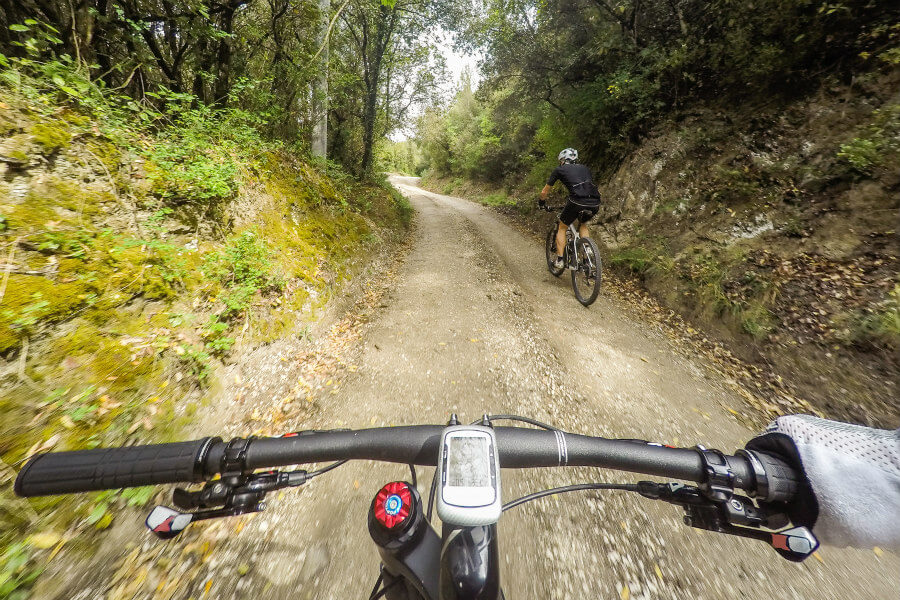
The Japanese manufacturer has three levels of change group for low bicycle ranges. They are indicated transmissions for those who seek to start in this sport or make occasional use without great technical demands.
Shimano Altus
The Shimano Altus range is Shimano input group for mountain bicycles. However, in its catalog they also introduce the different versions of the Tourney, which is however more indicated for urban cycling or for very low range bicycles.
However, to start starting in the sport of the mountain bike, the group that offers more guarantees is the Altus. Bet on the development of triple dish, suitable for those who have a simple mountain bike and start with simple walks and routes through the field.
The cassette, meanwhile, is 9 speeds, with ranges 11-32, 11-34 and 11-36. The buttons are simple but fast and effective, including a
Display Analog of marches so that the cyclist knows at all times in which relationship is pedaling.
Cyclist type: beginner.
Development options: 3x9.
SHIMANO ACERA
The shimano sidewalk is already a notable level jump with respect to the Altus. It is one of the traditional transmission groups of Shimano, which stands out for its reliability and greater softness of change, which is also very intuitive.
It consists of simple change handles with
Display Analog of marches, like the Altus. Also with double and triple dish gambling, with 36-22D developments and 44-32-22 or 40-30-22D, respectively.
The front diversor has cable guided
Side Swing To offer greater softness when changing the dish, a technology present in upper ranges. In addition, the Shimano Scale change group already has a range of handbags and hydraulic disc brake tweezers.
Cyclist type: beginner.
Development options: 2x9 and 3x9.
Rivals on the market: SRAM X4.
Shimano relief
Shimano change relief can be considered as the entrance group to
Mountain Bike Sporting Japanese manufacturer.
It appears in the low -end bicycle assemblies, sharing price range with the Shimano Deore. Relief is presented as a simple and reliable change option, which also lowers the price of the bicycle.
Its only Achilles heel to not be considered mid -range is that it still does not include the 10 -speed cassette, much more versatile and necessary for current mountain cycling. It is still compatible with the 9 -speed Altus or the sidewalk, with a double or triple dish option.
In addition to the transmission group, Shimano Alivio offers hydraulic or mechanical disc brakes and even Zapata V-Brake, for low-end mountain bicycles.
Cyclist type: beginner,
biker occasional.
Development options: 2x9 and 3x9.
Rivals on the market: SRAM X5.
SHIMANO MEDIUM CHANGE GROUPS
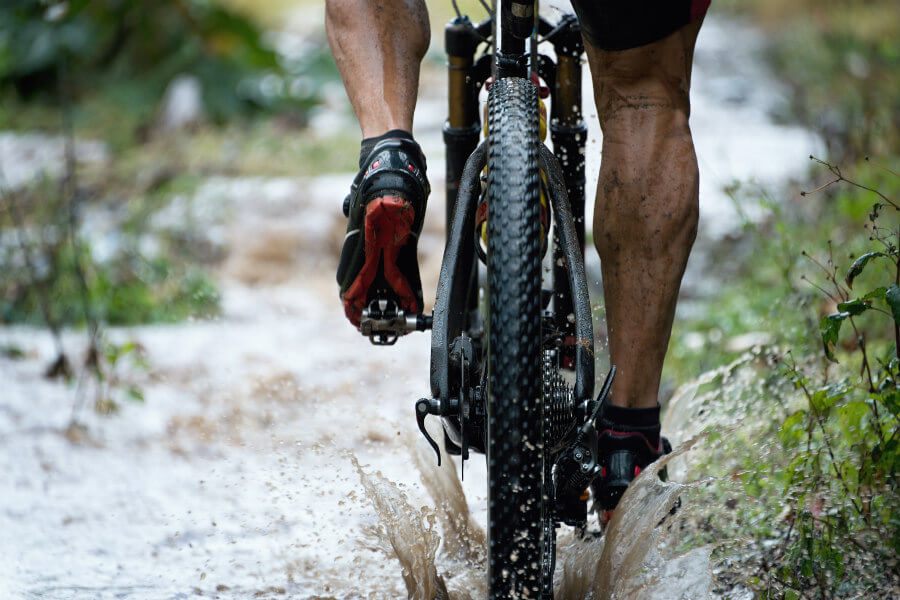
Shimano's Deore and SLX changes are among the best -selling in the history of the Japanese manufacturer. They are very reliable average ranges that adapt to the different scenarios that a middle -level cyclist can find.
Shimano Deore
One of the groups of
Mountain Bike More popular and sold in the history of Shimano is the Deore, present in many low-media range bicycle bicycles.
The quality jump from the relief to Deore is notorious, even more since they have added to the group the novel M6100 series, the 12 -speed Deore Deore.
The cheapest Shimano 1x12 (the complete group, disc brakes included, does not exceed 400 euros) is a revolution for the middle range of mountain bicycles, offering a wide spectrum of cyclists 12 speeds, very high ranges.
The 12V cassette has a 10-51D development range and the connecting rods assemble 30 or 32 teeth dishes. These inherit SLX or XT groups the special denture
Dynamic chain engagement+, consisting of a wide/narrow teeth profile to better retain the chain and avoid jumps or exits.
In addition to its 1x12 version, the Deore maintains its 10 series (Cassettes 11-46 and 11-42) and 11 speeds (11-42 and 11-51), with monopath or double plate, already eliminating the triple of the offer.
On the other hand, the rear diversor incorporates technology
Shadow RD+, with the adjustable stabilizer to avoid chain jumps and exits.
The group also includes disc brakes of two or four pistons, bushings and aluminum wheels of 27.5 and 29 ”.
Cyclist type: intermediate level biker.
Development options: 1x12, 1x11, 1x10, 2x11, 2x10.
Rivals on the market: SRAM X5 (10V), SRAM NX (11V), SX SX EAGLE (12V).
Shimano SLX
We could identify the Shimano SLX as an economic alternative to Shimano Deore XT, but without the sophistication and precision of the latter.
The SLX change has reliable components, valid for any type of MTB, routes, training, etc., in addition to a range of bushings, passes and hydraulic disc brakes.
The current series has also evolved towards the 12 speeds, eliminating the previous 11V option, which has been relegated to Deore. Thus, the group is offered only in 1x12 and 2x12 development options, to compete directly in the market with the SAM EAGLE mid -range (GX and NX).
The connecting rods are offered with the double plate of 36-26d or monopath of 30, 32 or 34d. The 12V cassette, meanwhile, has two range options: one 10-45d roller for double plate and another 10-51d climber, indicated for monopathing.
The weight of this cassette SLX is lighter than that of the deore series, in addition to rigid, which reduces inertia and favors accelerations.
Cyclist type: intermediate level biker.
Development options: 1x12 and 2x12.
Rivals on the market: SRAM NX EAGLE, SRAM GX EAGLE.
High -end Shimano Change Groups
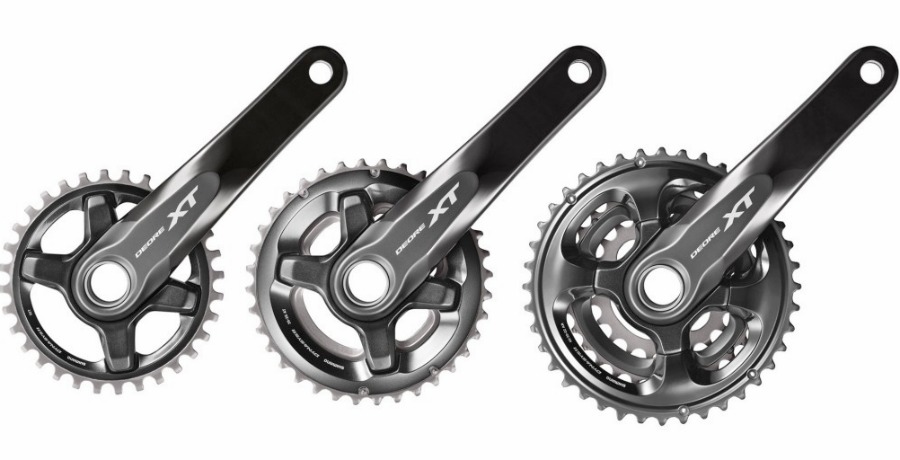
If you are a cyclist who makes intense use and needs a change of high performance, Shimano has two groups: Deore XT and XTR. Both are sold in versions of mechanical change and electronic change, with the difference that in the second case Mounts Cassette 11v and to date is incompatible with 1x12 transmissions.
SHIMANO DEORE XT AND DEORE XT DI2
It is not only a transmission group. It is a reference in components for
Mountain Bike, for brakes, wheels or pedals. The Shimano Deore XT change has evolved in the last years of a simpler mid -range group to a more complete and sophisticated one that serves as a bridge between the amateur and professional MTB.
His change is already recognized throughout the community
biker Because of its reliability and speed of action, which can even deserve more to ride your bicycle than an XTR, due to its outstanding value for money.
Is valid for all types of modalities of the
Mountain Bike, from
XC until
enduro and does not clash for competition or intense training.
Like the mid -range groups of the brand, it has evolved towards 12 speeds. In fact, the current series (M8100) offers the same development relationships as the SLX: 1x12 and 2x12. But there are more plate options (28, 30, 32, 34 and 36d) and the same as Cassette (10-45d and 10-51d).
Deore XT is lighter and offers superior reliability than Shimano SLX. Front and rear divers are more rigid. In the latter, the Roldanas are also of greater development (13D) and has special anti -chain and stabilizer departures (Shadow RD+).
All this results in a soft, precise, silent and lasting transmission operation.
In addition, to increase this precision and softness of change, the Deore XT is also available in DI2 electronic version, inheriting all the technology of the electronic road groups, but adapted to the demands of the MTB.
The big difference of the Electronic Grupo Deore XT DI2 with respect to the mechanical version is that it is only compatible with 11 -speed cassette.
Type of cyclist: intermediate / high level.
Development options: 1x12 and 2x12.
Rivals on the market: SRAM X01 EAGLE (Mechanic), SRAM X01 EAGLE AX (electronic/wireless).
[IRP Posts = "485" Name = "This is the new Shimano XT M8000 group: competition performance for demanding bikers"]
SHIMANO XTR AND XTR DI2
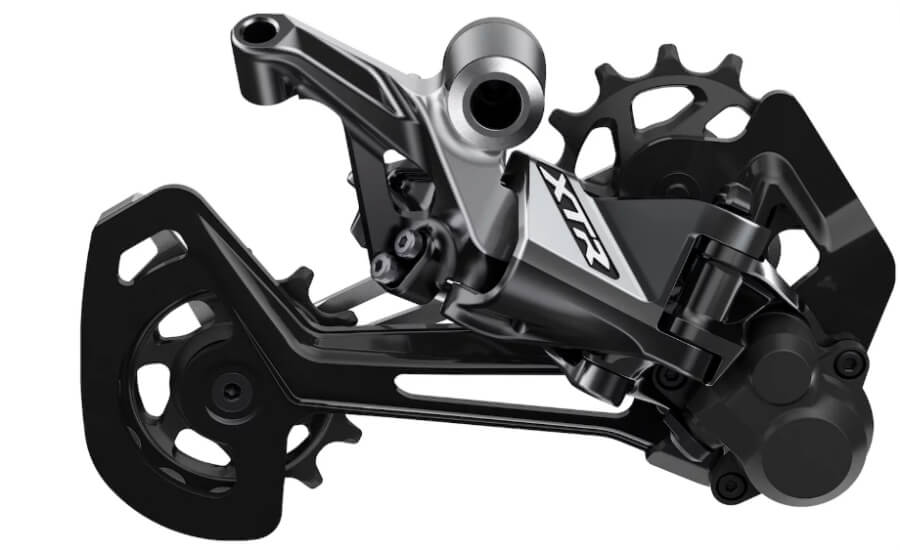
The Shimano XTR change group is to
Mountain Bike What on the El Dura-Ace road. This is the Shimano competition group, with a long history within the world of mountain cycling over 25 years.
Light, functional, precise and with electronic version DI2, it is the group that Shimano runners use for their competitions, installed in high -end bicycle assemblies, above 4,000 euros.
Like the SLX or the XT, it has adopted the 12 -speed cassette as the transmission axis, with single -plate and double plate options.
But the XTR combines more and better speed of speed of change, such as technology
Instant Release In the buttons, or the slightest tension for the change of gears thanks to the special design of its rear diverter, with larger roldanas of 13 teeth to properly manage the 12 -speed ratio.
It offers several rod options, forged in aluminum with hollow design Hollowtech II to lighten weight, maximize the rigidity and power delivery from the pedals.
These are available in a singleopot of 30, 32, 34, 36 and 38 teeth, somewhat larger than the SLX or Deore XT that demand a good state of form.
On the other hand, the 12 -speed cassette, which has the same range as the SLX and XT, has Beam Spider design with three of its upper crowns made of aluminum and the rest of steel, which lightens its weight.
As for the Shimano XTR Di2 electronic version, it is only compatible with 11 speed cassettes, but increases the accuracy of all XTR components thanks to the electronic drive system.
In addition, marches can be controlled from a practical and ergonomic digital display for the handlebar, where we can see both the march we have engaged and the state of the battery or the preconfigured mode of change (normal or
Syncro Shift).
Cyclist type: professional.
Development options: 1x12 and 2x12.
Rivals on the market: SRAM XXI EAGLE (Mechanic), SRAM XX1 EAGLE AX (electronic/wireless).
[IRP Posts = "2979" name = "This is the new Shimano XTR 12V group for mountain cycling"]
Shimano change groups for freeride and descent
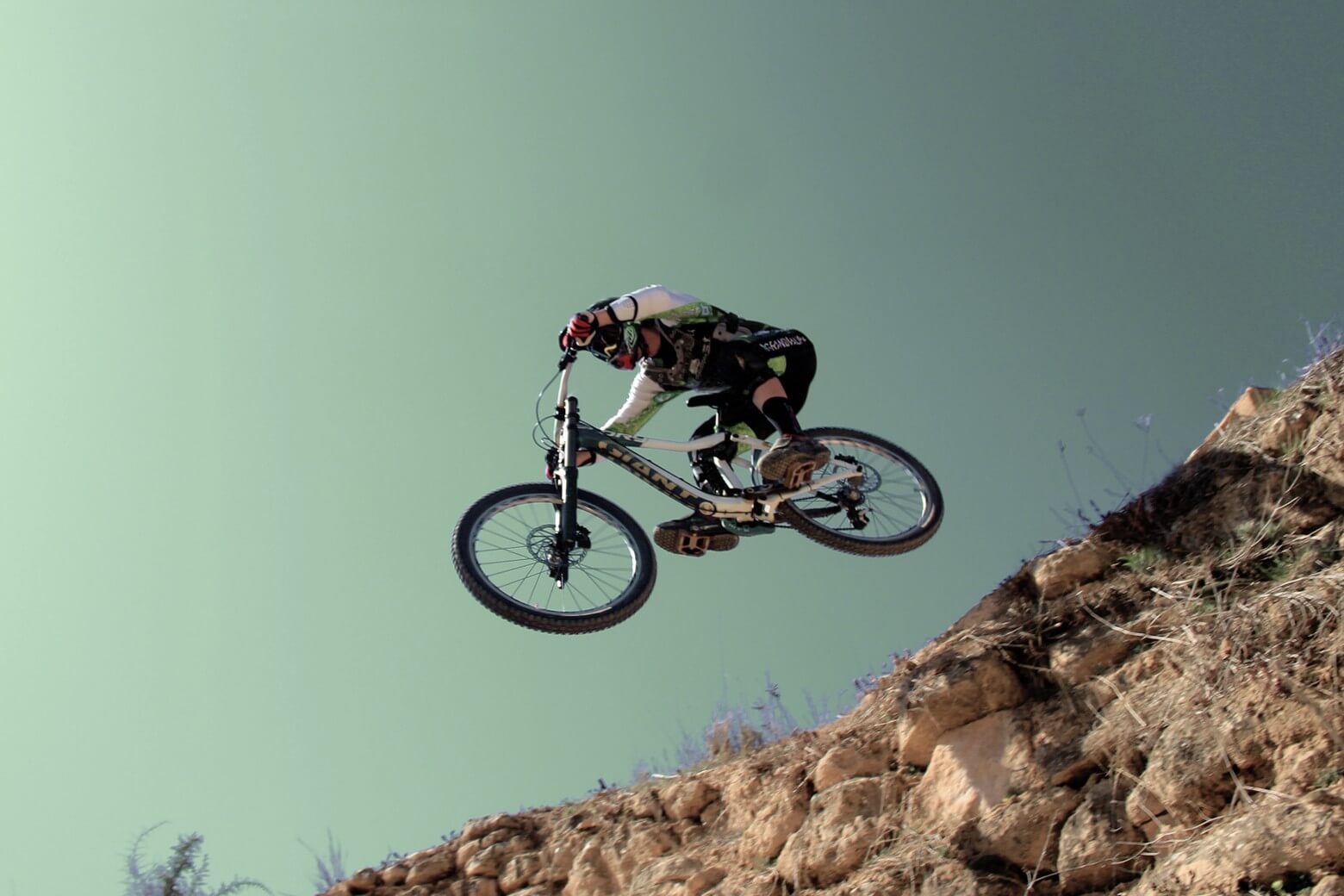
The freeride and the descent are two modalities of mountain cycling that have very specific needs in regards to the transmission. That is why Shimano has developed two ranges of change groups designed for this type of use.
Shimano Zee
To fill the needs of the
RIDERS More aggressive, those who practice freeride or descent, Shimano offers two groups for their totally adapted bicycles: the ZEE and Saint.
The Shimano Zee derives from the Saint and is the entrance group for
RIDERS Beginners It is unmarked from the usual MTB groups with a specific ergonomic and non -slip button, two 1x10 thick wall cranks and steel axis to increase the resistance in unstable terrain or a short -box rear deviation ideal for the change of long relationships.
In this sense, the specific 10-speed cassette of the ZEE has a 10-25D range, in addition to the Hyperglide teeth to keep the chain stable when passing through the teeth.
Cyclist type: Rider of beginner DH.
Development options: 1x10
Rivals on the market: SRAM GX DH.
Shimano Saint
The Shimano Saint range does not only have its own transmission group, but also with disc brakes of strong mordant (4 pistons), bushings, interns and pedals (both automatic and platform) specific for the high performance descent.
It is a group tested in the DH World Cup and among its specifications highlights the
INTEGRATION UNIT FOR THE CHANGE MANET, an adapter in which both brake and change handle can be installed together.
This, says Shimano, releases space in the handlebar and allows the
Rider a more intuitive and rapid handling of both.
The connecting rods, meanwhile, have axis and inserts of the steel pedal and use the most resistant Hollowtech II forge. They are available with dishes of 34, 36 and 38 teeth.
As for the cassette, the Saint offers two types: one more conventional and versatile CS-M771-10 of 10 speeds and ranges 11-32 or 11-34 and the most
descend: The CS-6700 10V of 11-25, 11-28 or 12-30d.
Cyclist type: Rider experienced.
Development options: 1x10.
Rivals on the market: SRAM X01 DH.
 The Japanese manufacturer has three levels of change group for low bicycle ranges. They are indicated transmissions for those who seek to start in this sport or make occasional use without great technical demands.
The Japanese manufacturer has three levels of change group for low bicycle ranges. They are indicated transmissions for those who seek to start in this sport or make occasional use without great technical demands.
 Shimano's Deore and SLX changes are among the best -selling in the history of the Japanese manufacturer. They are very reliable average ranges that adapt to the different scenarios that a middle -level cyclist can find.
Shimano's Deore and SLX changes are among the best -selling in the history of the Japanese manufacturer. They are very reliable average ranges that adapt to the different scenarios that a middle -level cyclist can find.
 If you are a cyclist who makes intense use and needs a change of high performance, Shimano has two groups: Deore XT and XTR. Both are sold in versions of mechanical change and electronic change, with the difference that in the second case Mounts Cassette 11v and to date is incompatible with 1x12 transmissions.
If you are a cyclist who makes intense use and needs a change of high performance, Shimano has two groups: Deore XT and XTR. Both are sold in versions of mechanical change and electronic change, with the difference that in the second case Mounts Cassette 11v and to date is incompatible with 1x12 transmissions.
 The Shimano XTR change group is to Mountain Bike What on the El Dura-Ace road. This is the Shimano competition group, with a long history within the world of mountain cycling over 25 years.
Light, functional, precise and with electronic version DI2, it is the group that Shimano runners use for their competitions, installed in high -end bicycle assemblies, above 4,000 euros.
Like the SLX or the XT, it has adopted the 12 -speed cassette as the transmission axis, with single -plate and double plate options.
But the XTR combines more and better speed of speed of change, such as technology Instant Release In the buttons, or the slightest tension for the change of gears thanks to the special design of its rear diverter, with larger roldanas of 13 teeth to properly manage the 12 -speed ratio.
It offers several rod options, forged in aluminum with hollow design Hollowtech II to lighten weight, maximize the rigidity and power delivery from the pedals.
These are available in a singleopot of 30, 32, 34, 36 and 38 teeth, somewhat larger than the SLX or Deore XT that demand a good state of form.
On the other hand, the 12 -speed cassette, which has the same range as the SLX and XT, has Beam Spider design with three of its upper crowns made of aluminum and the rest of steel, which lightens its weight.
As for the Shimano XTR Di2 electronic version, it is only compatible with 11 speed cassettes, but increases the accuracy of all XTR components thanks to the electronic drive system.
In addition, marches can be controlled from a practical and ergonomic digital display for the handlebar, where we can see both the march we have engaged and the state of the battery or the preconfigured mode of change (normal or Syncro Shift).
Cyclist type: professional.
Development options: 1x12 and 2x12.
Rivals on the market: SRAM XXI EAGLE (Mechanic), SRAM XX1 EAGLE AX (electronic/wireless).
[IRP Posts = "2979" name = "This is the new Shimano XTR 12V group for mountain cycling"]
The Shimano XTR change group is to Mountain Bike What on the El Dura-Ace road. This is the Shimano competition group, with a long history within the world of mountain cycling over 25 years.
Light, functional, precise and with electronic version DI2, it is the group that Shimano runners use for their competitions, installed in high -end bicycle assemblies, above 4,000 euros.
Like the SLX or the XT, it has adopted the 12 -speed cassette as the transmission axis, with single -plate and double plate options.
But the XTR combines more and better speed of speed of change, such as technology Instant Release In the buttons, or the slightest tension for the change of gears thanks to the special design of its rear diverter, with larger roldanas of 13 teeth to properly manage the 12 -speed ratio.
It offers several rod options, forged in aluminum with hollow design Hollowtech II to lighten weight, maximize the rigidity and power delivery from the pedals.
These are available in a singleopot of 30, 32, 34, 36 and 38 teeth, somewhat larger than the SLX or Deore XT that demand a good state of form.
On the other hand, the 12 -speed cassette, which has the same range as the SLX and XT, has Beam Spider design with three of its upper crowns made of aluminum and the rest of steel, which lightens its weight.
As for the Shimano XTR Di2 electronic version, it is only compatible with 11 speed cassettes, but increases the accuracy of all XTR components thanks to the electronic drive system.
In addition, marches can be controlled from a practical and ergonomic digital display for the handlebar, where we can see both the march we have engaged and the state of the battery or the preconfigured mode of change (normal or Syncro Shift).
Cyclist type: professional.
Development options: 1x12 and 2x12.
Rivals on the market: SRAM XXI EAGLE (Mechanic), SRAM XX1 EAGLE AX (electronic/wireless).
[IRP Posts = "2979" name = "This is the new Shimano XTR 12V group for mountain cycling"]
 The freeride and the descent are two modalities of mountain cycling that have very specific needs in regards to the transmission. That is why Shimano has developed two ranges of change groups designed for this type of use.
The freeride and the descent are two modalities of mountain cycling that have very specific needs in regards to the transmission. That is why Shimano has developed two ranges of change groups designed for this type of use.












